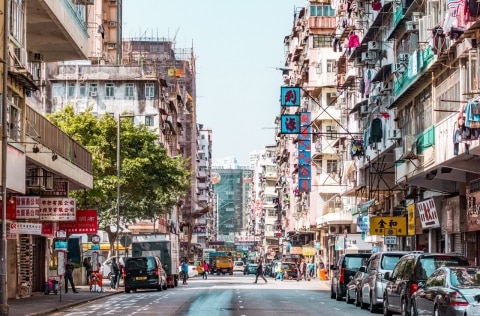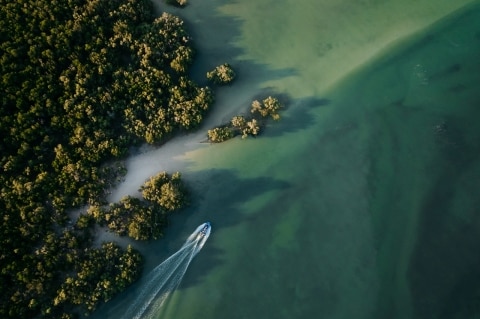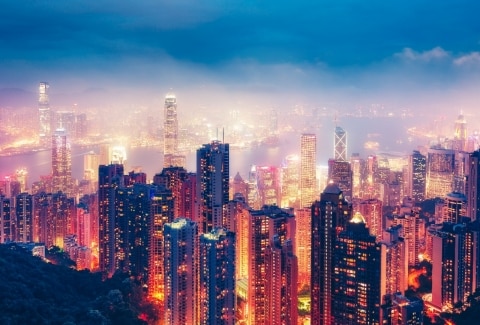Haven’t Been to Hangzhou? Here are 15 Reasons You Should
We often think of China’s major metropolises as vibrant places of shimmering skyscrapers, bustling streets and high-energy neighbourhoods, but some of the country’s cities are much more relaxed than those cosmopolitan hubs. Known to locals as the “most beautiful city in China”, Hangzhou lies in a region famed for its beautiful lakes and mountains and, at just one hour from Shanghai by high-speed rail, it’s easy to see why locals opt to spend their holidays in the city and its surrounds. If you’re heading to Hangzhou, here are the things you should add to your to-do list.

Image credit: Alamy
Take in the beauty of West Lake
1/16According to Chinese mythology, the waters of Hangzhou’s tranquil West (Xi) Lake were the result of a doomed love between a mortal man and a white snake spirit. No matter the true origin story, the lake has inspired centuries of poets, artists and now, visitors, to marvel at its singular beauty. The modern city of Hangzhou hangs over this exceptionally pretty body of water, as do scores of pagodas, temples and ornamental trees that adorn its banks.
Image credit: Alamy
Wander through Longjing plantation
2/16Zhejiang province is known for its tea, and the region’s capital is a great place to start your education. Longjing’s tea plantations produce a beverage (“dragon well tea”) that’s been enjoyed for over 1200 years. A particular strain of longjing tea, known as the “Green Queen” is one of the country’s most precious, and visitors can see its leaves flourishing on the lazy hills of Longjing, just outside Hangzhou.
Image credit: Alamy
Visit the former residence of Hu Xueyan
3/16Hu Xueyan was one of China’s most successful merchants who traded in everything from silk to real estate in the late Qing dynasty. His home – which is actually a sprawling estate with more than 20 separate buildings, a glorious garden and the largest man-made karst cave in China – is an architectural marvel. The property showcases a dizzying display of craftsmanship using traditional woods such as ginkgo, Chinese beech and red sandalwood, spanning from the facades to the furniture.
Image credit: Alamy
Take a Grand Canal cruise
4/16Hangzhou’s Grand Canal (Jing–Hang Grand Canal) lives up to its name, beginning in Beijing and winding its way a staggering 1800 kilometres, connecting five major rivers in its path (it’s 22 times the size of the Panama Canal, for comparison). Don’t miss the opportunity to take a cruise down its main waterway while in Hangzhou, where you can take in the city’s fascinating contrasts – on one side, there’s the cluster of modern high-rises, and, on the other, the atmospheric facades that have lined the banks since ancient times.
Image credit: Alamy
Take a ride through Xixi National Wetland Park
5/16Board a sampan and plunge into Xixi National Wetland Park, an area of natural beauty that spans wildflowers, birdlife and calm waterways. No matter the time of year, there always seems to be something to admire: from mid-March to mid-April, there are weeping plum blossom blooms, dragon boat races in May and a flower festival that carpets the area in February.
Image credit: Grand Hyatt Hangzhou
Stay at Grand Hyatt Hangzhou
6/16Perched on the edge of West Lake, Grand Hyatt Hangzhou benefits from a glorious vantage point, where views of the water or the city’s small clutch of high rises can be enjoyed. Splashing out here is worth it, especially if you have the enormous Presidential Suite in your sights – within it, a 400-square-metre private terrace awaits, with undisturbed views of the lake.
Image credit: Alamy
See the man made beauty of Thousand Islets Lake
7/16Drive two hours south-west of Hangzhou and you’ll reach the Xin’anjiang Reservoir, where the man-made Thousand Islets (Qiandao) Lake resides. Locals travel to the area for relaxed boat rides, the signature dish of hongshao yutou (carp with ginger, soy and Shaoxing wine) and, if they’re diving enthusiasts, the sunken city of Shicheng, which has remained intact since it was built between the Eastern Han Dynasty of 25 to 200 CE.
Image credit: Alamy
Wander down Hefang Street
8/16A stroll down historic Hefang Street offers a glimpse of ancient China. This bustling, cobbled street has survived – in differing forms – since the South Song Dynasty that ruled China between 1127 and 1279. Today, it’s a busy street of antique shop fronts, including the herbal medicine store Baohe Tang, which has stood on the very same spot for over 1000 years, according to folklore.
Image credit: Alamy
Say hello to Hello Kitty Park
9/16About an hour’s drive north-west of Hangzhou, the queen of kawaii (Japanese for “cute”), Hello Kitty, has her very own theme park – the first one built outside of her home country of Japan. The park has six themed areas, each with its own unique brand of charm: the spinning-chair ride of apple-shaped seats is a favourite for all ages and is an adorable nod to the beloved cat’s favourite food (and her height, that’s famously measured in apples).
Image credit: Alamy
Cruise the waterways of Xitang
10/16There are 104 bridges that leap over the canals of Xitang Water Town, an ancient, waterside village just an hour from Hangzhou. Hop on a traditional wupeng – once used as local transport, but now just as sightseeing vessels for visitors – and see a Chinese city as it would have been during the Qing and Ming dynasties some 1000 years ago.
Image credit: Four Seasons Hotel Hangzhou
Eat at exceptional restaurants
11/16In addition to the abundance of delicious, casual restaurants throughout the city, Hangzhou is home to a number of internationally recognised eateries, too. Our picks? Jin Sha, the in-house eatery of the city’s luxury Four Seasons, where you can sample Hangzhouese and Shanghainese cuisine with a fine-dining edge and Longjing Manor (399 Longjing Rd, Xihu), where home-style meals are served in private dining rooms that overlook the surrounding tea plantations.
Image credit: Alamy
Sip on tradition at the National Tea Museum
12/16In the entirety of China, there’s only one museum dedicated to tea, and it’s in Hangzhou. The museum facilitates a journey through all facets of this culturally significant beverage, from its cultivation and production, through to its consumption with specific teaware and customs. You’ll also be invited to taste tea, as well as take part in a traditional tea ceremony, with the impossibly green plantation hills as an atmospheric backdrop.
Image credit: Alamy
Stop into Paris
13/16You’ll do endless double takes in Tianducheng, 15 minutes from central Hangzhou by train, where an entire town acts as an architectural homage to France’s charming capital. This luxury real estate development is righty dubbed “Paris of the East” and features its own Garden of Versailles, Arc de Triomphe, Neoclassical-fronted buildings and, the pièce de résistance: the world’s second-largest Eiffel Tower replica outside of Las Vegas.
Image credit: Alamy
Immerse yourself in culture at Lingyin Temple
14/16One of the country’s most famous Buddhist sites, Lingyin Temple sits amid quiet hills and towering trees. Many devotees take a pilgrimage here, where one of the largest statues of Buddha Sakyamuni resides in the lotus position, along with other relics of religious significance.
Image credit: Alamy
Hike Mount Mogan
15/16The peaceful Moganshan National Park is a delightful day trip option from the centre of Hangzhou. Famed for its towering bamboo groves – the very canopy groves that Michelle Yeoh flew over in the Oscar-winning epic, Crouching Tiger, Hidden Dragon – and a rare yellow tea harvested on the mountainside and made by a female tea master, there are three picturesque peaks to summit, with beautiful views of the valley below.















